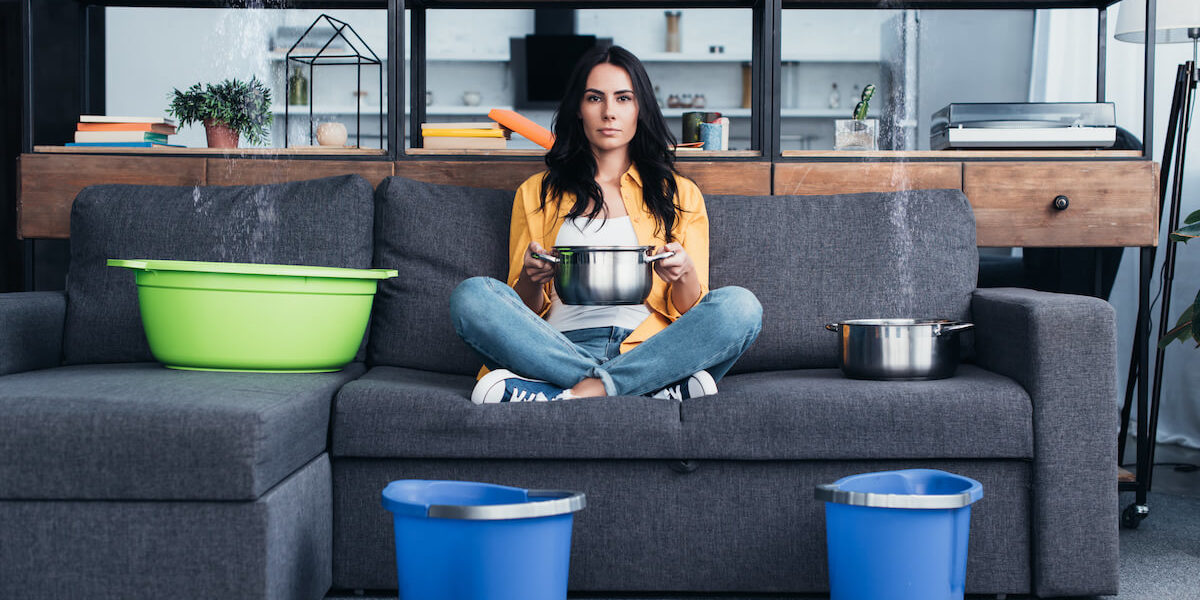Water damage can be an overwhelming and stressful experience for any homeowner. From costly repairs to potential health risks, the effects of water damage can be devastating. Luckily, there are a few steps homeowners can take to minimize the damage and get their property back to its pre-incident condition.
This article will help you identify what water damage is, the types of water damage, how to prepare for potential water-related issues, and what steps to take if water damage does occur. Equipped with information from this article, homeowners will be able to confidently move forward and get their property back in order.
What is Water Damage?
Water damage refers to the harm caused when a water source impacts a property’s structure or contents. It may occur due to various weather events such as floods and heavy rain, or from plumbing issues, faulty appliances, or breaks in a home’s system. Water damage can result in significant harm to a property, including shifting and settling of the foundation, cracks, electrical system disruptions, and mold growth which can pose a health risk.
Types of water damage and associated risks
Burst water pipes – A burst water pipe is a situation where a pipe carrying water under pressure has ruptured, resulting in a leak or flood. It is caused by various factors, including old or worn-out pipes, sudden changes in temperature, excessive water pressure, corrosion, and ground movements. Neglecting routine maintenance and failing to fix minor leaks can also lead to a burst water pipe. A burst water pipe can result in significant water damage to a property and its contents and should be addressed immediately to prevent further harm.
Flooding – Flooding happens when water accumulates in spaces not meant to hold it, such as homes or buildings. Poorly maintained roofs that allow rainwater to seep into the building or poor drainage systems can lead to flooding. Structures situated in flood-prone areas are also vulnerable to flooding. The causes of flooding can range from heavy rain, snow melt, broken pipes to natural disasters like hurricanes or tornadoes. Flooding can result in major damage to property and also pose a threat to health and safety of the inhabitants.
Roof leak – A roof leak occurs due to several reasons such as incorrect installation, aging, weather factors, and low-quality materials. The leakage can result in serious harm to a home’s interior, including mold development and the creation of a hazardous indoor environment.
Steps to take when water damage occurs
Shut off the water supply – The first thing a homeowner should do when water damage occurs is shut off the water supply to the damaged area. The shutoff valve for the water line is usually located near the water meter, which is typically found in the basement or garage. If the water supply is controlled by a single-handle valve, rotating the handle will turn off the water. If the water is controlled by a handle with two wheels, turning both wheels in the opposite direction of the water flow will shut off the water.
Remove excess water – Once the water supply has been shut off, homeowners should remove as much water as possible. Using a shop vacuum, a wet/dry vacuum, or towels, they can remove standing water and hopefully minimize the amount of damage to their property. It’s important to remember that the water removed from the affected area needs to be disposed of properly.
Seek professional help – Once the excess water has been removed, homeowners should contact a professional water damage restoration company. These professionals have the training and expertise required to fully assess the damage and execute a plan to restore the property.
Water damage prevention tips
Inspect your roof and gutters regularly – Roofs and gutters are areas of a home that are susceptible to water damage, so they should be regularly inspected. A homeowner can conduct an inspection by climbing up on their roof and looking for potential issues, such as missing shingles, cracks, or holes. They can also use a ladder to inspect their gutters for issues such as clogs or a buildup of debris. Once these areas have been inspected, any repairs or maintenance issues should be addressed as soon as possible to reduce the risk of water damage.
Close off and clean out water sources – When rain is in the forecast, homeowners should close off water sources, such as spigots and sprinkler systems, that could cause water damage to a home. Sprinkler systems should be shut off when there is a risk of rain, and spigots should be covered to prevent water from flowing freely. Dirt and debris that collect in gutters and downspouts can cause water to back up and seep into the home, so these areas should be cleaned out regularly.
Install a water shutoff valve – Installing a water shutoff valve near the water meter is a good way to minimize the risk of water damage. If a leak or other type of water-related incident occurs, the valve can be quickly shut off to minimize the damage. The valve can also be used to isolate the water supply when cleaning out gutters or repairing a leak.
Professional water damage restoration services
Water damage restoration is a process that begins as soon as a water-related incident occurs. Water damage restoration services can help homeowners address the issue as soon as possible and minimize the damage to their property. A company like 365 Restoration, LLC. will respond to the scene, assess the damage, and create a plan to restore the home. The company will also be responsible for hiring other contractors, like electricians and plumbers if they are needed. In many cases, homeowners can be back in their homes in 24 hours or less. Water damage restoration services can be costly, but they are often necessary given the potential damage a water leak or break can cause.


